12 Best Flowers For Bees to Fuel Their Buzzzy Activities
Flowers are essential food sources for local and native bee species. If you are trying to make your garden a little bit more bee-friendly or you are creating a special bee garden, including some flowers for bees that we know they will love is the best place to start.
Bees are essential to a healthy and thriving ecosystem. Without them, many flowers and foods that we are used to would disappear from our earth and with the bee populations declining all over the world, now is the best time to start planting our gardens with our bee friends in mind.
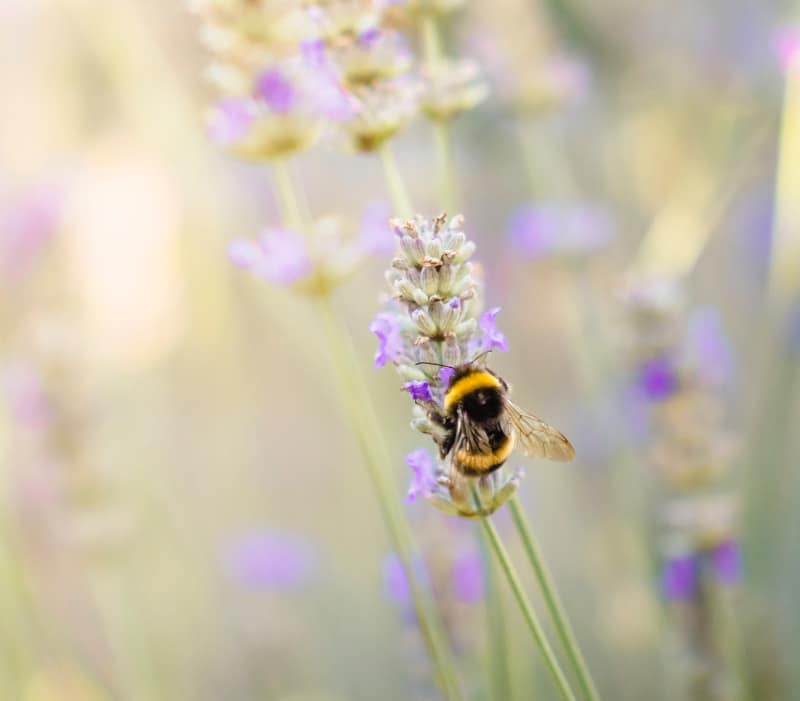
Whether you are a full-time gardener or someone who just wants to help the bees, creating a bee bath and choosing flowers for bees to plant in your garden is one of the easiest places to start.
Below are twelve of my top flowers for bees to help you create a safe haven in your garden for all the types of bees in your area.
How Do I Choose Flowers For Bees?
When choosing your flowers for bees you want to keep in mind two things your flowers need to keep bees coming back for more Nectar and pollen.
Flowering plants make up the majority of a bee’s diet, so they need a good variety and a decent amount available to fuel their busy activities.
You also want to include flowers that bloom at different times of the year and make your bee flowers attractive to incoming bees.
Pollen And Nectar
Nectar is the main source of energy for bees. This sweet substance is high in natural sugars that give bees all the energy they need. When choosing your flowers for bees, pick ones high in nectar to keep the bees that visit your garden energized and healthy.
Next is pollen. Pollen provides bees with all the fats and proteins they need to maintain a healthy, balanced diet. Pollen is also the dusty substance bees will take from one flower to another to aid a flower’s reproductive cycle.
If you want a healthy bee, they need flowers rich with pollen. So, choose flowers that need bee pollination and give visiting bees lots of pollen to feast on.
Year Long Flowering
Bees spend more of the year than the summer buzzing in and out of our gardens. When choosing your flowers for bees, pick ones that flower and bloom throughout the year. Some flowering bushes loved by bees will even hold their flowers deep into the winter.
Not only will this give your garden a burst of colour all year long but you will keep the wild bee species well-fed for every month of the year.
Bee-Friendly Colours
Did you know that bees can’t see every color of the color wheel? Bees can’t see the color red. Because of this, they are less attracted to red blooms.
A bee’s favorite color is by far purple. That is why you will see them buzzing quite happily around lavender and foxgloves.
But blues, pinks, and sometimes orange blooms will also draw in lots of your bee friends. This does not mean you have to avoid every other flower color just make sure you have a good variety of flowers for bees and their color preferences.
Cornflowers
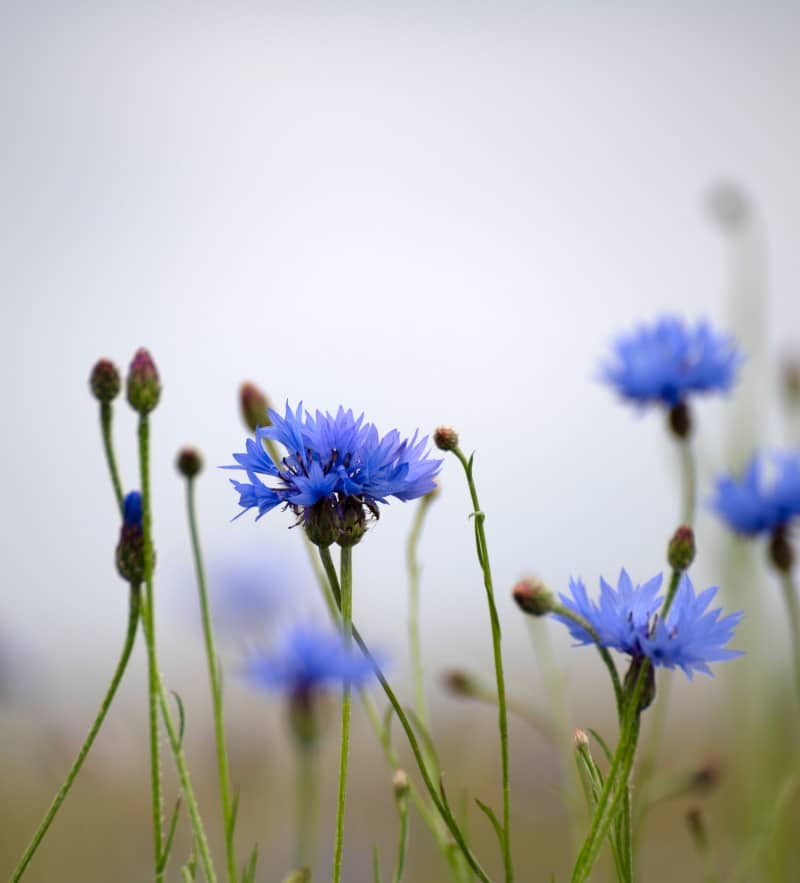
Rich in nectar, cornflowers are the perfect flowers for bees. It is a very hardy flower and can be relatively drought-tolerant. This annual flower needs to be replanted every year but it grows fast and produces vivid, open flower blooms that bees adore.
Cornflowers are easy to grow from seed, making them a little more budget-friendly. They can add a colorful wow factor to your garden while providing lots of energy for the bees.
Color Varieties: Blue, Purple, Pink, and White
Sun Exposure: Full Sun
Size: Up to 80cm
Blooming Season: Spring & Summer
Comfrey
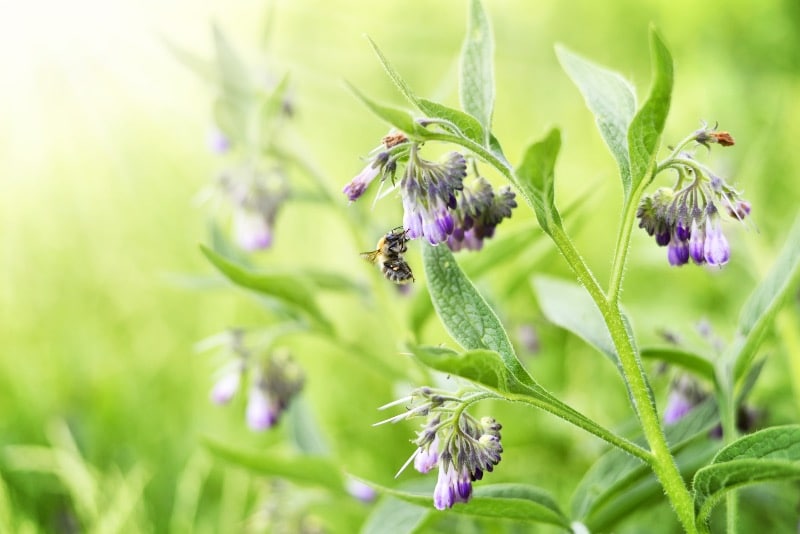
Comfrey is a hairy, wildflower found in damp ground, usually beside rivers. It has small, tubular blooms that are well-loved by bumblebees and honey bees. However, it does grow fast and large. So, it is a plant better for larger gardens.
Comfrey has become the gardeners’ best friend thanks to its uses as a powerhouse fertiliser, slug repellent and composting. High in pollen, if you can squeeze some comfy into your garden, I say go for it.
Colour Varieties: Pink and Purple
Sun Exposure: Full sun to partial shade
Size: Up to 1m high
Blooming Season: Early to mid-summer
Lavender
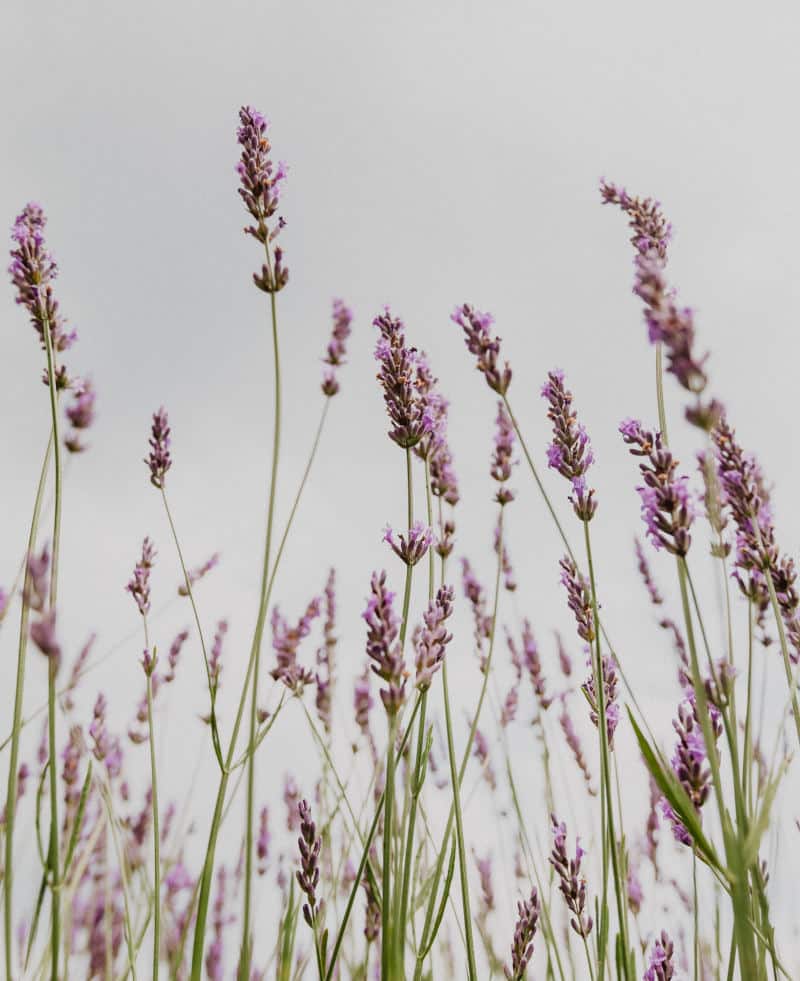
Now, there are tonnes of lavender varieties and the bees love them all but I’ve gone for English lavender specifically. This is because this lavender variety is pretty hardy and won’t require replanting year after year.
Lavender has tonnes of flowers for bees on each stem and can grow to a pretty substantial bush. However, it is also quite happy to be kept in pots which can keep its size in check. Lavender has a beautifully strong scent that will attract and feed bees.
Color Varieties: White, Purple, and Blue
Sun Exposure: Full sun
Size: 30-100cm
Blooming Season: Late spring to mid-summer
Rosemary
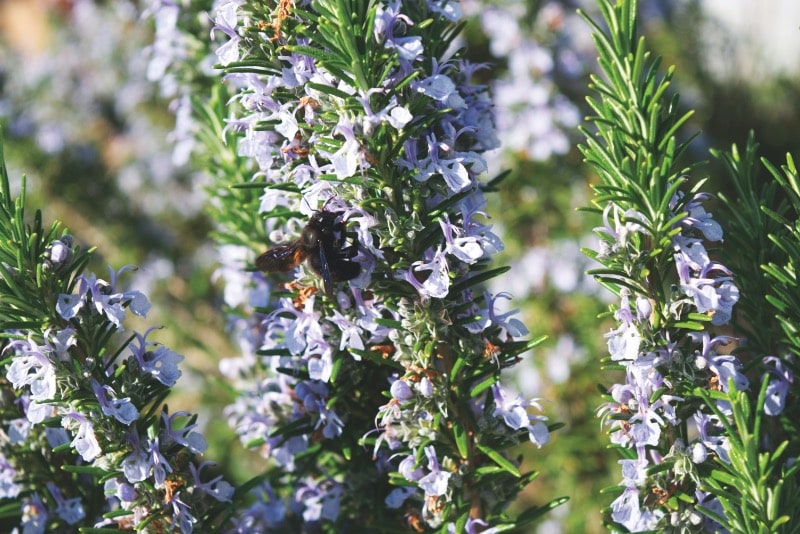
Rosemary is an evergreen herb that will shine a little green colour all year round. However, its delicate blooms are adored by bees. This can also be kept in pots for smaller gardens that want to introduce flowers for bees or to keep its size small.
Rosemary flowers bloom mid to late spring. However, some species of this plant can bloom right through to the Autumn. This is another plant that bees go wild for but can also be used in the kitchen for cooking or preserving.
Color Varieties: White, Pink, Purple, and Blue
Sun Exposure: Full sun
Size: 1m high
Blooming Season: Spring
Thyme
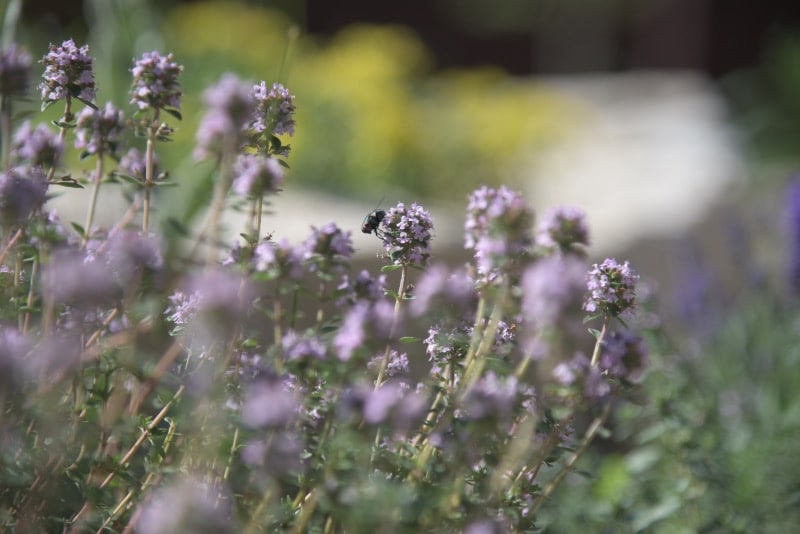
Thyme flowers are rich in nectar making them one of the best flowers for bees to include in your garden. This Mediterranean herb is more than just a cook’s best friend. It is also the perfect addition to a bee garden.
Thyme is a very hardy plant and requires little fuss at all. As long as it gets at least 6-8 hours of sunlight a day this herbaceous plant grows well.
It does very well in drier soils and needs to be protected from wet, water-logged soils. Thyme is easy to grow in containers as long as it is in well-draining soil.
Color Varieties: Purple, Pink, and White
Sun Exposure: Full sun
Size: 25cm high
Blooming Season: Mid-summer to early autumn
Catmint
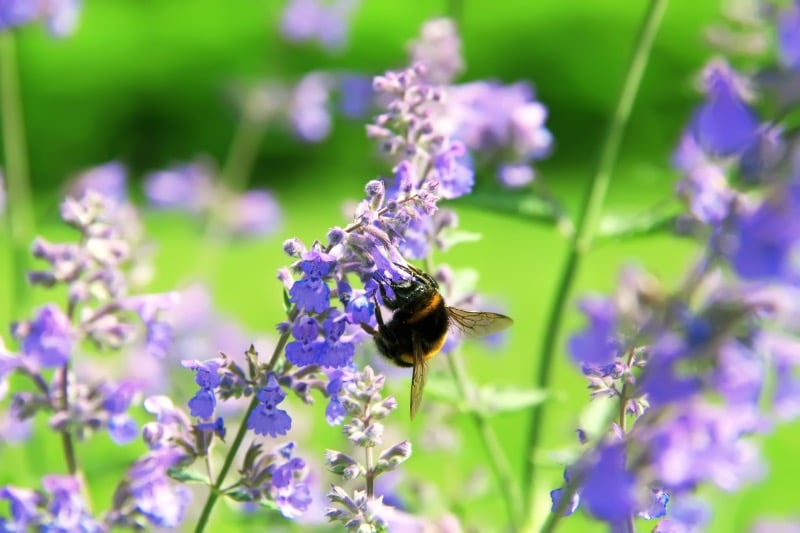
Catmint is a perennial plant, that bears spear-like flowers in white or lavender blue shades. Although catmint is a favorite flower for bees, it is better known for the effect it has on domestic cats.
This plant may attract cats to your garden and intoxicate them with its beautiful smell. So, if you want to avoid extra cats in your garden, you might give this one a miss.
However, don’t rule it out entirely. Catmint has a long blooming season, perfect to keep bees happy. Catmint plants are also easy to grow and very low maintenance. This multi-purpose plant can also attract other pollinators, like butterflies, to your garden and insects that keep down pest populations.
Color Varieties: White, Blue, and Purple
Sun Exposure: Full sun, partial shade
Size: 12-16 inches high
Blooming Season: Mid-summer to mid-autumn
Foxgloves
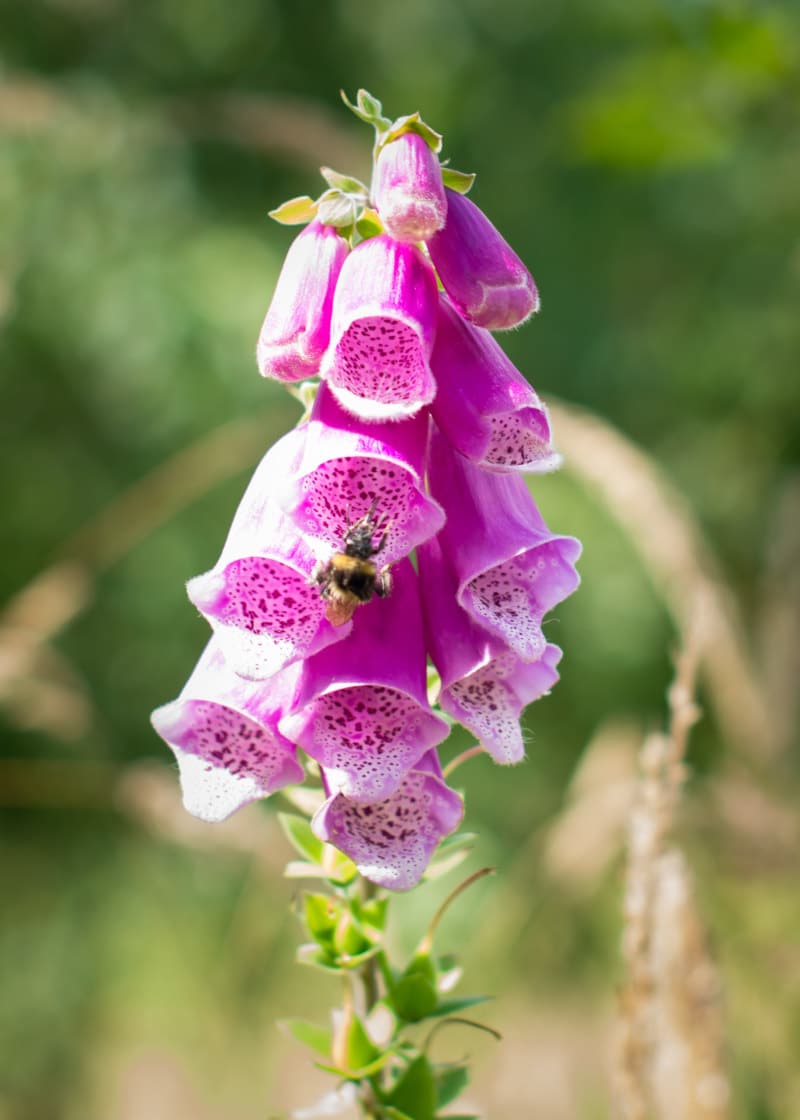
Foxgloves really are the all-you-can-eat buffet of the flowers for bees world. They have specifically evolved to be attractive to bees to help them pollinate. They can grow pretty tall and along their stems, they grow lots of tubular flowers in shades of pink and purple, although occasionally their flowers can be white.
Foxglove is a high-pollen flower that grows fast and is pretty hardy in most environments. Although, they are found in the wild in heathland, edges of woods, and gardens.
Foxgloves can be poisonous if ingested directly but they can be used to treat heart failure and high blood pressure. If you’re looking for flowers for bees that really pack a punch, foxgloves are a great choice.
Color Varieties: White, Purple and Pink
Sun Exposure: Full sun to partial shade
Size: 2m high
Blooming Season: Mid-summer to early autumn
Clover
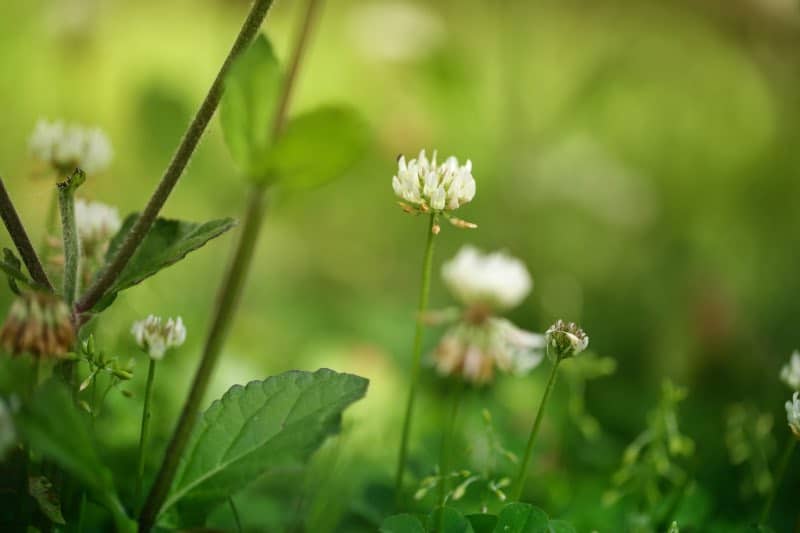
Clovers are popular types of flowers for bees. They commonly grow naturally in gardens and grass but are often sacrificed every time we grow our lawn.
White clover tends to attract honeybees, whereas red clover is the flower of preference for bee species with long tongues. Clover has high concentrations of both pollen and nectar, making it a good flower choice for your bee-friendly garden.
You can easily purchase clover plants online but, if you already have them growing in your garden, it’s best to just let them do their thing and lay your lawn mower down.
If you can’t stand to never mow your lawn. Try and leave an unmowed section around the edge of your garden so the natural clover can thrive.
Color Varieties: White, Pink, Red, and Purple
Sun Exposure: Full sun
Size: Up to 40cm in height
Blooming Season: Mid-spring to mid-autumn
Strawberries
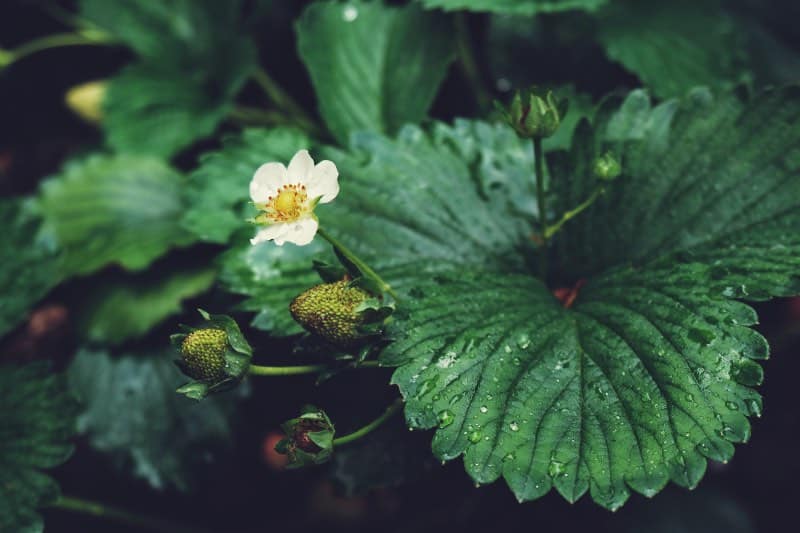
If you are looking for a plant that your local bees will love but will also give you something in return, there’s none better than the strawberry plant. Providing lots of nourishment, the strawberry flower is small and dainty but has open, single petals for easy bee access.
Strawberry flowers don’t bloom for very long, four weeks at the most, but they can give your garden a bit of food diversity for both you and the bees. They are rich in nectar and pollen, making for some wonderful flowers for bees.
Color Varieties: White, Pink, and Red
Sun Exposure: Full sun
Size: 25-40cm in height
Blooming Season: Late spring to early summer
Dandelions
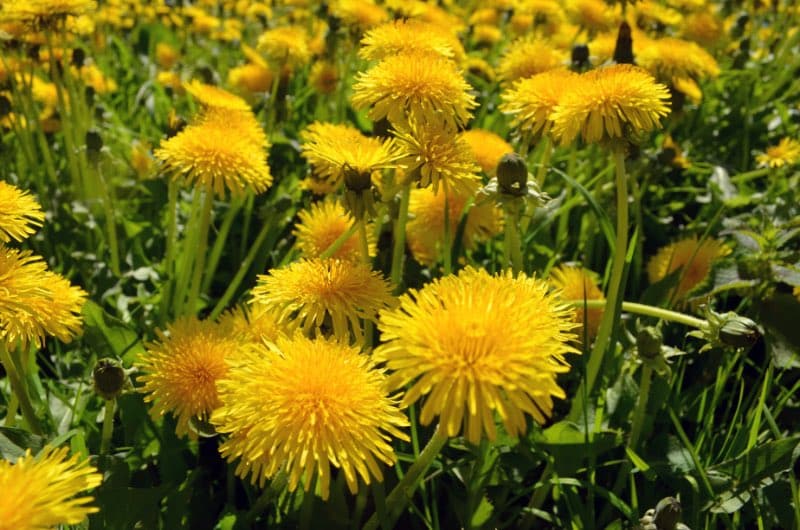
Dandelions might have been given a bad reputation, but these early spring bloomers save the lives of many early-rising bees. High in pollen, the dandelion is one of the early-in-the-year food sources for many native bee species. In return, the bees pollinate these dandelions like crazy.
You can purchase dandelion seeds online but they pollinate and disperse their seeds, pretty well on their own. If you see dandelions growing in your garden, try to let them be. At least during the spring season.
Color Varieties: Yellow
Sun Exposure: Full sun
Size: 5-40cm in height
Blooming Season: Early spring to late summer
Crocuses
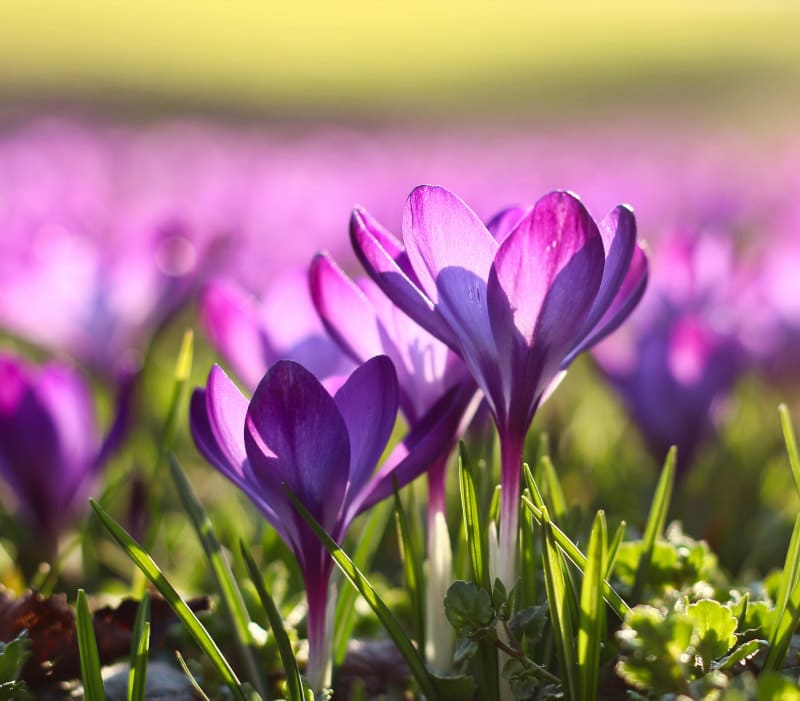
Crocuses may not bloom for long but their dainty, low-to-the-ground blooms provide a lovely food source for bees during the late winter and early spring months.
They take up very little room and even survive very well in pots. Perfect if you are trying to grow flowers for bees but you don’t have much garden space.
Early-season bees love to forage in full sun, and this is exactly where crocuses should be planted. There’s a wide variety of crocuses you can choose from but some of the most bee-friendly include Crocus sieberi, Crocus tommasinianus, or the Crocus sativus that blooms in the autumn.
Color Varieties: White, Orange, Yellow, and Purple
Sun Exposure: Full sun
Size: 2-3 inches in height
Blooming Season: Late winter to early spring
Winter-flowering Honeysuckle
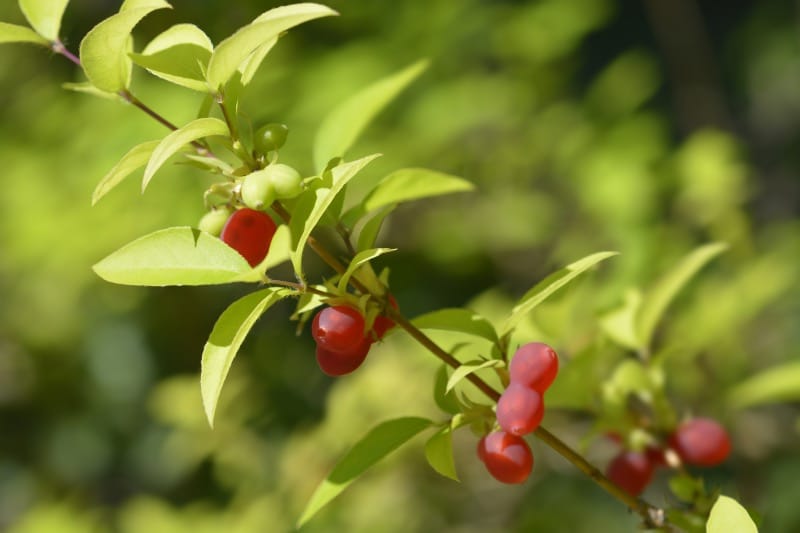
Don’t forget about the bees who enjoy the cooler climes of the winter. When planning a bee garden you want to include flowers for bees that bloom throughout the year.
Winter-flowering honeysuckle has a beautiful scent and can continue flowering, even when the temperature drops.
Although this bloom grows as a decent-sized bush, you will need plenty of room for this honeysuckle, it can be kept in pots and regularly trimmed back. Occasionally the flowers will turn to bright red berries during the summer, adding more color interest to your garden.
Color Varieties: Cream, White, and Yellow
Sun Exposure: Full sun to partial shade
Size: 2.5m in height
Blooming Season: Winter and Spring